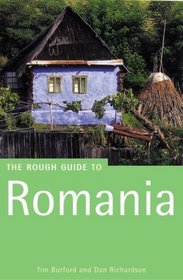Search -
The Rough Guide to Romania
The Rough Guide to Romania
Author:
INTRODUCTION Travel in Romania is as rewarding as it is challenging. The country's mountain scenery and great diversity of wildlife, its cultures and people, and a way of life that at times seems out of the last century, leave few who visit unaffected. However, although not as impoverished as Albania and most of the countries of the former Sovie... more »
Author:
INTRODUCTION Travel in Romania is as rewarding as it is challenging. The country's mountain scenery and great diversity of wildlife, its cultures and people, and a way of life that at times seems out of the last century, leave few who visit unaffected. However, although not as impoverished as Albania and most of the countries of the former Sovie... more »
ISBN-13: 9781858287027
ISBN-10: 1858287022
Publication Date: 7/9/2001
Pages: 409
Edition: 3rd
Rating: 1
ISBN-10: 1858287022
Publication Date: 7/9/2001
Pages: 409
Edition: 3rd
Rating: 1
4 stars, based on 1 rating
Genres:
- Travel >> Europe >> General
- Travel >> Europe >> Romania & Moldova
- Travel >> Reference >> Guidebooks
- Travel >> Travel Writing




